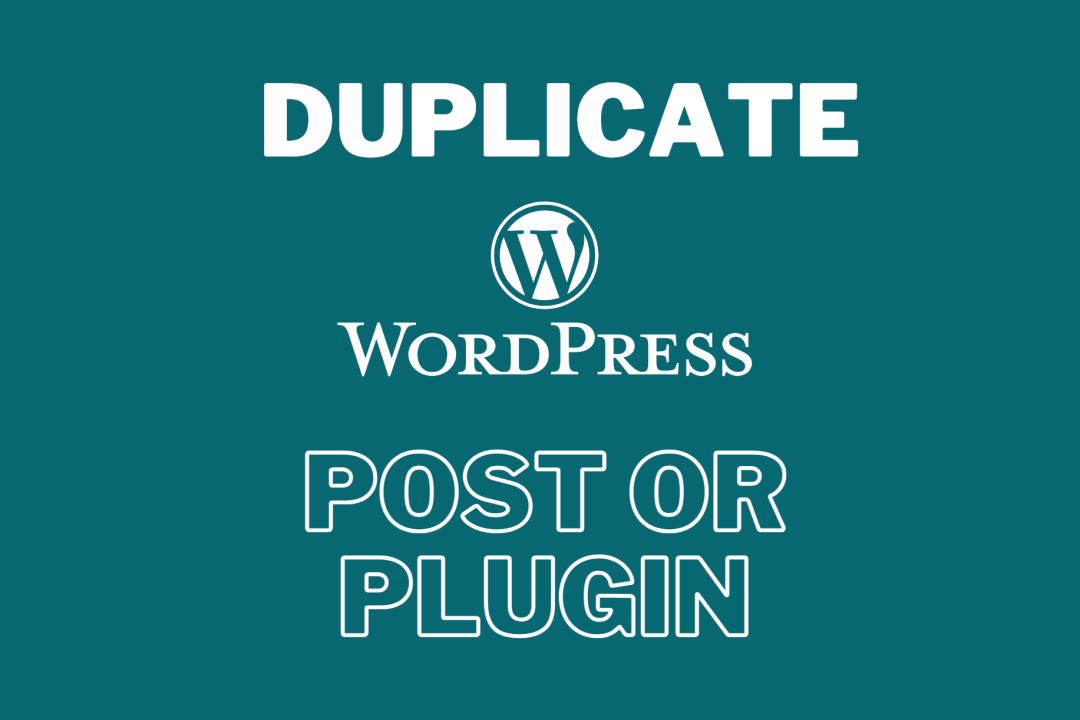
Duplicating pages or posts in WordPress is a useful feature when you need to create similar content or reuse existing layouts. This guide will walk you through two methods to achieve this: using a plugin and doing it manually. We’ll cover every step to ensure you can duplicate pages and posts with ease, regardless of your experience level.
Table of contents
Choosing the Right Plugin
Several plugins can help you duplicate pages or posts in WordPress. Two popular options are “Duplicate Post” and “Yoast Duplicate Post.” Both are free, easy to use, and regularly updated.
Installing and Activating the Plugin
Let’s use the “Yoast Duplicate Post” plugin as an example. Follow these steps to install and activate the plugin:
- Log in to your WordPress dashboard.
- Navigate to “Plugins” > “Add New.”
- In the search bar, type “Yoast Duplicate Post” and press Enter.
- Locate the plugin in the search results, and click “Install Now.”
- After installation, click “Activate.”
Duplicating Pages and Posts with the Plugin
Once the plugin is activated, you can duplicate pages or posts by following these steps:
- Navigate to “Posts” or “Pages” in your WordPress dashboard, depending on what you want to duplicate.
- Locate the post or page you want to duplicate, and hover your cursor over its title.
- You’ll see additional options appear beneath the title. Click on “Clone” to create an immediate duplicate, or “New Draft” to create a duplicate and open it in the editor.
- The duplicated post or page will appear in the list as a draft with the same title, prefixed by “Copy of.” You can now edit and publish it as desired.
- Duplicating a Page or Post Manually
If you prefer not to use a plugin or want more control over the duplication process, you can duplicate a page or post manually. Here’s how:
Copying the Post/Page Content
- Log in to your WordPress dashboard.
- Navigate to “Posts” or “Pages,” depending on the content you want to duplicate.
- Click on the title of the post or page you wish to copy.
- You’ll be taken to the WordPress editor. Click on the three-dot menu in the top-right corner and select “Code Editor.”
- Copy the entire code block.
- Go back to “Posts” or “Pages” and click “Add New.”
- In the new post or page, click the three-dot menu in the top-right corner again and select “Code Editor.”
- Paste the copied code block into the editor.
- Switch back to the “Visual Editor” by clicking the three-dot menu and selecting “Visual Editor.”
Copying the Post/Page Metadata
- Return to the original post or page in the WordPress editor.
- Scroll down to the “Post/Page Attributes” section (usually found in the right sidebar or below the content)
- Note down the parent page (if applicable), template, and order.
- Go to the duplicated post or page in the editor.
- In the “Post/Page Attributes” section, apply the same parent page (if applicable), template, and order as the original post or page.
Copying the Post/Page Featured Image
- Return to the original post or page in the WordPress editor.
- Scroll down to the “Featured Image” section (usually found in the right sidebar or below the content editor).
- Click on the featured image to open the media library.
- Note the image title or file name.
- Go to the duplicated post or page in the editor.
- In the “Featured Image” section, click “Set Featured Image.”
- Search for the image title or file name in the media library, select the image, and click “Set Featured Image.”
Copying Categories, Tags, and Other Taxonomies
- Return to the original post or page in the WordPress editor.
- Scroll down to the “Categories” and “Tags” sections (usually found in the right sidebar or below the content editor) and note down the categories and tags assigned to the post or page.
- If your website uses custom taxonomies, scroll down to their respective sections and note down the assigned terms.
- Go to the duplicated post or page in the editor.
- In the “Categories,” “Tags,” and custom taxonomy sections, assign the same terms as the original post or page.
Saving and Reviewing the Duplicated Post/Page
- Click “Save Draft” in the top-right corner of the editor to save your changes.
- Preview the duplicated post or page by clicking “Preview” in the top-right corner of the editor.
- Review the content and layout to ensure everything is copied correctly. If necessary, make any adjustments in the editor and save your changes.
- When you’re satisfied with the duplicate, click “Publish” to make it live on your website.
Additional Tips for Duplicating Pages and Posts in WordPress
Handling Internal Links and Short codes
When duplicating content, be mindful of internal links and short codes that may need updating. If the original post or page contains internal links pointing to other pages or posts within your website, ensure they’re still relevant in the duplicated version. Similarly, if your original content includes short codes that reference specific post or page IDs, update these short codes to reflect the new IDs in the duplicated content.
Managing SEO and Duplicate Content
Duplicate content can have negative effects on your website’s SEO. To avoid any issues, make sure to update the duplicated page or post’s metadata, such as title tags, meta descriptions, and canonical URLs. Consider using an SEO plugin like Yoast SEO or Rank Math to help manage these elements effectively.
Updating Page and Post Slugs
WordPress automatically generates a unique slug for each page and post based on its title. When duplicating content, the new page or post will have a slug that closely resembles the original but includes a number at the end to differentiate it. To improve your website’s SEO and user experience, update the slug to better reflect the content of the duplicated page or post.
Keeping Track of Duplicated Content
If you frequently duplicate content, it’s crucial to keep track of your duplicated pages and posts. Consider using a content management tool, such as Trello or Asana, to create a workflow for managing duplicated content and ensure each duplicated page or post is reviewed, updated, and published accordingly.
Customising Permissions for Duplicating Content
When using a plugin like Yoast Duplicate Post, you can customise permissions to determine which user roles can duplicate content. This can be useful if you have multiple team members working on your website and want to limit the ability to duplicate content to specific roles.
To customise permissions, follow these steps:
- Navigate to “Settings” > “Duplicate Post” in your WordPress dashboard.
- Click on the “Permissions” tab.
- Select the user roles you want to grant permission to duplicate content.
- Click “Save Changes.”
Duplicating pages and posts in WordPress can save time and effort when creating similar content. You can choose to use a plugin like “Yoast Duplicate Post” for a quick and easy duplication process, or you can manually duplicate content for more control over the process. Whichever method you choose, this guide will help you duplicate pages and posts in WordPress with ease.





